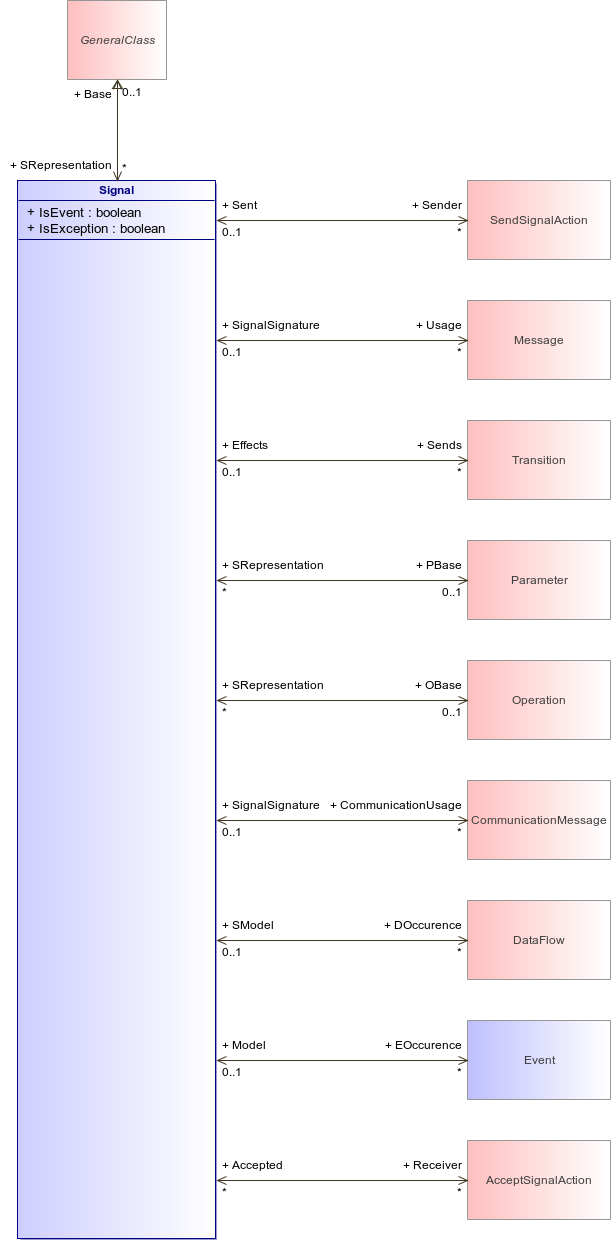
UML/BPMN Metamodel
Specification of an asynchronous stimulus communicated between Instances.
Signals are processed by StateMachines, which represent how SignalEvents are taken into account.
Modelio provides the DataFlow extension to UML. Using this extension, a Signal can be declared as representing a ModelElement (GeneralClass, Operation, or Parameter).
A DataFlow associated to the Signal will then be able to express this data, represented by the Signal, and may circulate between different NameSpaces.
In Modelio, a Signal belongs to a NameSpace, notably its Package.


Figure 137 : Signal (architecture_autodiagram)
Attribute | Description |
|---|---|
boolean IsEvent [1..1] | Establishes if it is an event in the sense of event based systems : CORBA, Java, XWindow's, SGBDR. |
boolean IsException [1..1] | Defines if it is an exception, as they exist in Java, C++, and so on. |
Association | Description |
|---|---|
Parameter that the Signal may represent. | |
The Operation that the Signal may represent. | |
Class that the Signal may represent. | |